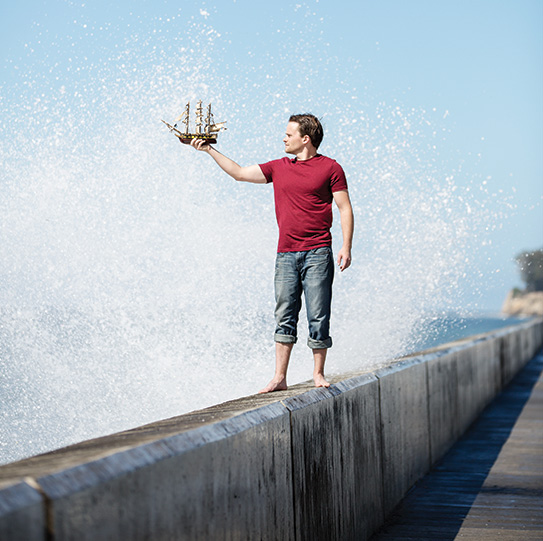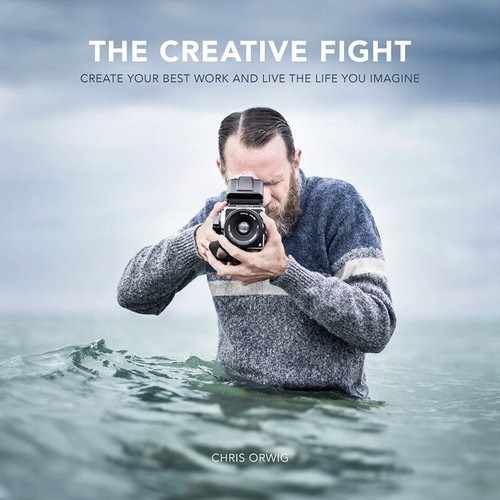Chapter Fourteen. Survival

When it comes to survival, Laurence Gonzales can shed some light. Gonzales is an adventurer and scientist who has been studying the art of survival for over 35 years. In his book Deep Survival he seeks to answer the question of why some people survive catastrophe and others die. He writes, “When confronted with a life-threatening situation, 90% of people freeze or panic, while the remaining 10% stay cool, focused, and alive.” Recounted in numerous examples, one of the main differences between life and death is the ability to get the amygdala (discussed in the previous chapter) to calm down. Panic is a very uncreative response. When we panic we make mistakes. To survive, we need a more flexible, mindful, and creative approach. And this is true whether we’re trying to outsmart a storm or raise kids.
The Uncreative Parent
When my daughter Annika was little, Fridays were our day to read books, play with puzzles, wrestle, and work on the house. We lived in an 80-year-old home that needed some work. Annika was my helper, and we would putter around the house and fix things. Often I would take her to Home Depot to get supplies. She would sit in the shopping cart as we traveled up and down the aisles. One Friday, I was in a hurry and Annika was in a foul mood. Her fussing and complaining were like the incessant screech of an alarm. Finally, in exhaustion I yelled at her to shut up. As I said those words, a wave of shame and regret flooded my heart. Annika’s little lower lip started to quiver as she looked at me with those big blue eyes and began to cry. A passerby who witnessed the exchange looked at me with utter disdain.
Why would I do such a thing? I was tangled up in frustration, so I panicked and acted in a way that isn’t congruent with who I am. And my daughter wasn’t feeling well, but I was too self-focused to realize her needs. I care more about her than anything in the world, so why did I respond in such an uncreative way? When we are distressed, the amygdala flashes red. Learning how to control your response can be the difference between life and death. Or in my case, the difference between being a loving father and a cruel stooge.
Anyone can act like a lizard and detach their tail and run, but it’s a sign of weakness and of being overly self-absorbed. Responding creatively takes self-awareness and strength. Panic is reactive, whereas creativity remains calm. Panic sees limits; creativity sees open doors. Panic shuts the book; creativity flips to the next page. Panic quits; creativity finds a way. Creative parents read books and take classes in order to learn how to respond to their children in loving ways; uncreative parents blow up. Creative parents learn that loving your kids means that you have to adapt.


Adaptation
According to Gonzales, survivors stay calm and learn to adapt. Even if the glass is half empty, they force themselves to see it as full. Survivors don’t belittle their plight but also can’t afford to complain. So they modify their view to make the most of what they have. I’ve always thought of this type of adaptation as one of creativity’s close friends. In the parenting class that I signed up for after the “Home Depot event,” the instructor gave a lesson on the importance of learning to adapt. In one segment he explained that parenting requires an adaptation to how we understand time. With kids in tow, life takes more time. The stress comes from thinking it won’t. According to dictionary.com, the word adapt means to “Modify, alter, change, adjust, readjust, convert, redesign, restyle, refashion, remodel, reshape, revamp, rework, rejig, redo, reconstruct, and reorganize.” Those are all very creative words. Adaptation is the opposite of being rigid and closed.
Creative adaptation implies change. Sometimes we adapt because of plenty, and others times because of want. Chuck Close’s life was dramatically changed when he was 48. After years of acclaim as a painter and photographer, he experienced a catastrophic spinal artery collapse that left him severely paralyzed. After extensive physical therapy, he regained the partial use of his limbs. Now a quadriplegic and confined to a wheelchair, Close still makes art and he thrives. When asked about whether he envies people who can walk, he replied, “Quadriplegics don’t envy people who can walk. We envy paraplegics. We think they have a much easier lot.” As a quadriplegic, Close has an attitude and approach to life that inspires. As an artist, he made an art out of making art, regardless of the limits he has. After the incident, Close quickly adapted his approach painting by strapping a brush to his arm. And he uses a mechanical device that raises, lowers, and rotates his large-scale canvases so he can access the entire frame.
Rock-Filled Shoes
Before the paralysis, Close was considered one of the top artists of his time. Now, almost 30 years later, his reputation endures. His work before and after the incident is equally profound. When asked about his paralysis, Close is dismissive and doesn’t like to draw attention to himself. He explains, “I don’t like to be seen as a hero. I have a few rocks in my shoes, but I paint just as before.” When tragedy struck and in the ensuing years, Close remained calm. He found a way around his limits, and he attributes his success to good luck: “I was just very lucky that I was successful and I had the money to make the changes to get back to work. I’ve always been very lucky. People say, ‘How can you call yourself lucky when you are stuck in a wheelchair and can’t use your hands?’ You know, the last 18 years have been the best years of my life. I’m back doing what I want to do. I’m able to support my wife and children. I do what I want to do and get paid to do it.”

When we see life through a different lens, it changes how we see. Chuck Close sees his life through the lens of good luck and gratitude. This has not only changed what he sees but empowered him to contribute in a more significant way. That’s exactly what the most creative people in the world do. Whether artists, parents, or ________, they don’t settle for the kit lens that came with their gear. They realize that how we see is a creative choice. So they search until they find the lens that gives them a view of the world that frees them to create their best work and contribute in the greatest way.
STEP 1
Identify three problems you are facing right now. List them below.
1.______________________________________________________________________
________________________________________________________________________
2.______________________________________________________________________
________________________________________________________________________
3.______________________________________________________________________
________________________________________________________________________
STEP 2
For each problem, provide new adaptive and alternative ways to view and deal with the situation.
Begin with your mind-set, and finish with a practical step you can take to move ahead.
________________________________________________________________________
________________________________________________________________________
________________________________________________________________________
________________________________________________________________________
________________________________________________________________________
________________________________________________________________________
________________________________________________________________________

